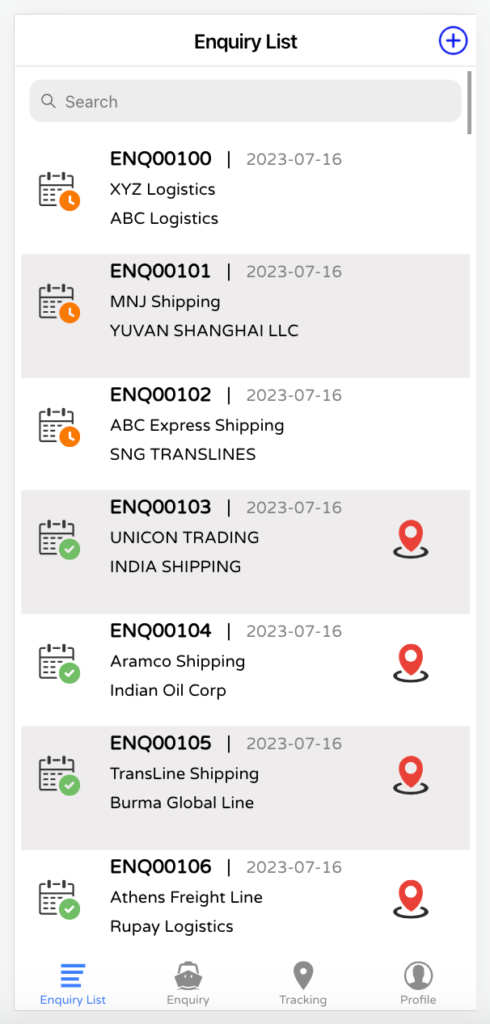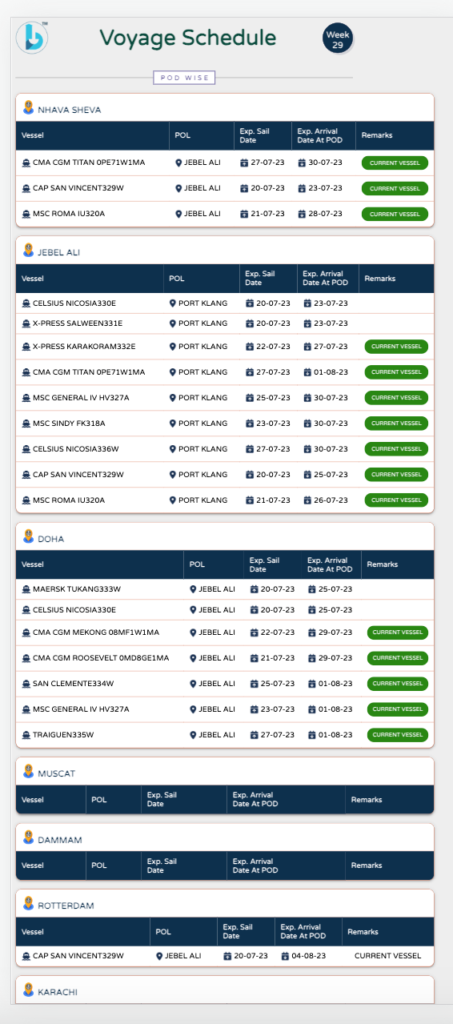A Mobile App for NVOCC & Agencies can be a helpful tool:
to streamline operations,
enhance communication,
provide convenience.
What are the attractive things in a mobile app designed for NVOCC & Agencies:
Who are the targetted users? Internal Salesperson or External Customer?
Booking/Shipping Instructions:
Make new booking requests through the app. This requires the mobile app to be installed on the customer’s phone which everyone can’t see eye to eye. As an alternative to this, Salesperson can enter shipment details, such as origin, destination, cargo type, weight, dimensions, and required services on behalf of the customer. The app can generate booking confirmations and provide notifications on booking status.

Paperwork:
Get Access to shipping documents, such as bills of lading, invoices, packing lists, and certificates of origin. It’s a step forward in increasing efficiency, as you can view, download, and share these documents from the mobile app.
Rates:
Display accurate and up-to-date rates and tariffs for various shipping services. This may not go well with everyone due to fluctuating shipping rates in the industry, but to some extent wherever fixed charges are applicable, those can be set it up.
Users can easily search for rates based on origin, destination, cargo type, and other relevant factors. This feature can help users quickly obtain cost estimates for their shipments.
Voyage Schedule:
Get access to the latest vessel schedules, including POL, POD, ETA, ETD, Cut-off, and transit times. Users can search and filter schedules based on their specific requirements. Remember, these voyage schedule needs to be maintained internally for better results.

Notifications:
Send push notifications in the mobile app such as vessel late arrival, additional clearance requirements, etc., and provide information and updates on customs regulations, compliance requirements, and any changes in international trade policies in advance.
Customer Support:
Users can communicate with NVOCC & Agency representatives through the mobile app. These days Email, Phone, Whatsapp, and Telegram are some of the best communication platforms in place, If you prefer this mode of communication will work for your company, your users can submit inquiries, ask for assistance, or request additional information. Multiple languages option will cater to a broader customer base.
Analytics:
Insights into your shipping activities such as shipment volumes, transit times, costs, and other key performance indicators.
Shipment Tracking:
Track the shipments in real-time using container numbers or bill of lading numbers. Provide updates on the current location, estimated arrival times, and any delays or changes in the shipment status.

Integrations:
Connect the Mobile App with a freight system, accounting software, or CRM tool. It’s a way forward on operational efficiency.
If possible, integrate the app with relevant port and customs systems to expedite documentation processing and reduce delays.
Customer SOA:
Take stock of pending to-be-billed charges, already billed charges, and outstanding charges booking-wise with online payment options for their shipments. All the charges will be displayed in the currency that is invoiced with the multi-currency billing feature and the financial reports should show in the local accounting currency as it is configured originally.
Before summing up, NVOCC & Agencies expect better user experience on the go with secured data, and provision to future enhancements.
Shipping-Technology-On-the-Go is the BuzzWord in the Industry Now After Uber, GPay, Zomato Experience!!!